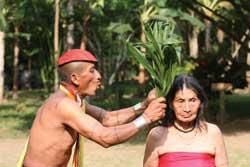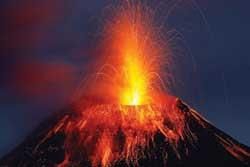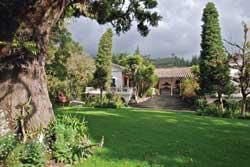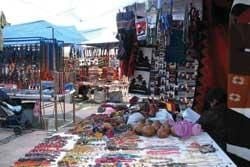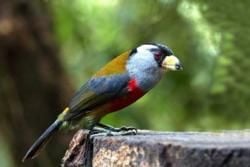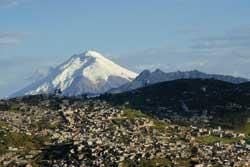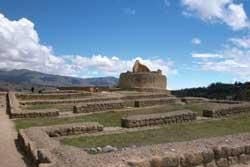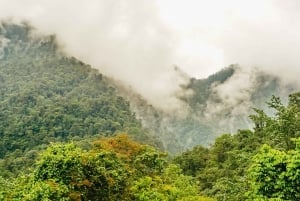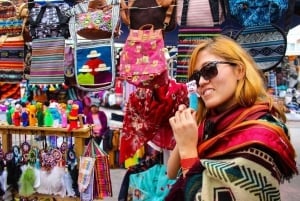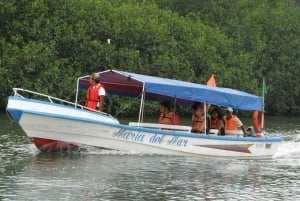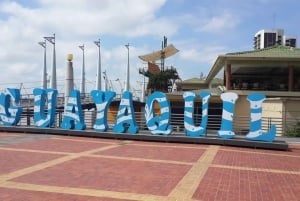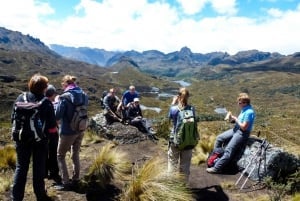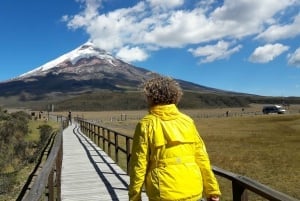The Andean Region
When approaching Quito (the capital city) by air, one can see –weather permitting- why the Andes region was named "The Avenue of the Volcanoes" in the 19th century by the German geographer Alexander Von Humboldt. In fact, when reaching Ecuadorian territory, the Andes Mountains split into two parallel chains or ranges, facing each other and separated by stretches of valleys and plateaus ranging between 1,400 and 2.400 meters (4.500 and 8.000 feet) of elevation above sea level. Seen from above, it actually looks as if Mother Nature purposely carved a natural Boulevard for the travelers and explorers to admire in awe…..This boulevard is adorned by 60 volcanoes towering above the clouds with their summits up to 6,400 meters (21,000 feet) of elevation and their sparkling glaciers creating views of spectacular beauty.
The Andes region is home to many indigenous people living in communities scattered throughout the mountains and valleys, while some have already settled in the big cities. The main ethnic group in Ecuador is the Quichuas (also written Kichwas), who live in the Andes region and in the Amazon Rainforest. Among the Quichuas, one of the best known groups are the vibrant Otavalos, who live in the north part of the Andes, known for its beautiful landscapes, lakes, valleys and cities like Ibarra, Cotacachi and Tulcan. When driving north of Ibarra, the traveler, if not forewarned, can be surprised: in the Chota valley there is a small community of African Ecuadorian people, who have kept their identity and pride.
On the northwestern part of the andean region is the province of Santo Domingo de los Tsachilas, home to an appealing and proud indigenous group, the Tsachilas, also known as the "Colorados" (Reds) because of their practice of painting their faces and bodies in red using annatto seeds. The Tsachilas keep and share many ancestral customs, native plant-based medicine and healing rituals among others. The city of Santo Domingo, the province capital, is only a two hour drive from Quito or Esmeraldas. Despite being included in the andean region, this area's climate and eco-system is more coastal. Many banana producing haciendas are here. It is also very rich in bird species, and several rivers run through it, offering excellent opportunities for adventure sports like river rafting and tubing.
Traveling to the center of the highlands, small villages like Pujili, Guamote, and Saquisili surprise the traveler with colorful indian markets, local festivals, fabulous food and intriguing faces. Cities like Latacunga, Ambato, and Riobamba expose a living struggle between past and modernity, while visitors and locals can contemplate the impressive volcanoes Cotopaxi, Chimborazo, Sangay, Illinizas, and many others. Not to miss is the small and animated city of Baños lying at the foot of the still very active Tungurahua volcano.
The mountains seem to descend toward the south after leaving the central region; the Ingapirca ruins are a definite proof of the Incas presence in the area still inhabited by their descendants. South of the highlands, the cities of Cuenca and Loja offer a noticeable anthropological contrast, as here white and Indigenous people did not intermix as they did in the rest of the country after the Spaniards conquered the region in the late 15th Century.
Along the way, beautiful haciendas (farms), many of them with centuries of history, have been transformed into charming country inns, offering top-class lodging, dining, and activities, like horseback rides and nature hikes through the magnificence of the Andes, and hands-on experiences of the daily routines of rural life.
For wildlife lovers, the Andes region offers an array of opportunities to find many of the animal species which populate the zone. Bird watchers enjoy the subtropical areas, especially those around the towns of Mindo and Nanegalito; condor lovers might find the iconic bird displaying its majestic flight over the Andes Mountains. Wild plants and flowers are found everywhere in the highlands of Ecuador. Finally, flower plantations are a great way to discover why Ecuador’s roses are particularly in demand all over the world.


